Lava Wyrm.
Deep in the belly of Evalaw lurk countless things that have been long forgotten for eons. Every once in a while, strange tales’ surface of such creatures. Stories of the great primordial serpents that slumber in the depths are one that never fails to spark the imaginations of many intrepid bard, or those foolish enough to seek them out.
The Lava Wyrms are a species of giant, fire-breathing serpents that dwell in the molten depths of Evalaw's active volcanoes.
The Great volcanic lakes in the deepest recesses of The Sunless Realms are not as desolate as many would like to hope, in fact it could be forgiven to assume no life could survive here at all. Well known for being an unbearable furnace, The Volcanic Basin is an unpredictable landscape of fissures and rifts rupturing throughout, filled with vast lakes of lava and jagged rocks where the caverns have broken apart and reformed from geothermic movements. Many tales have emerged of explorers to these volcanic depths barely surviving encounters with a ferocious creature that lurks deep beneath the burbling magma flows and molten lakes. The beast has been variously described as a giant worm or snake, but there are those who claim it is merely a hallucination brought on by the heat. The most recent reports describe the creature as a serpentine Dragon of great size, with the head of a reptile and the body of a huge snake.
In Arshinus legend, the Wyrms are said to have Slithered their way up from the belly of Evalaw at the behest of the great serpent Seerix, when the world was young. Long before the first sun rose, or our great mother Reishala was bestowed the kindling of life. So the fire sages say.
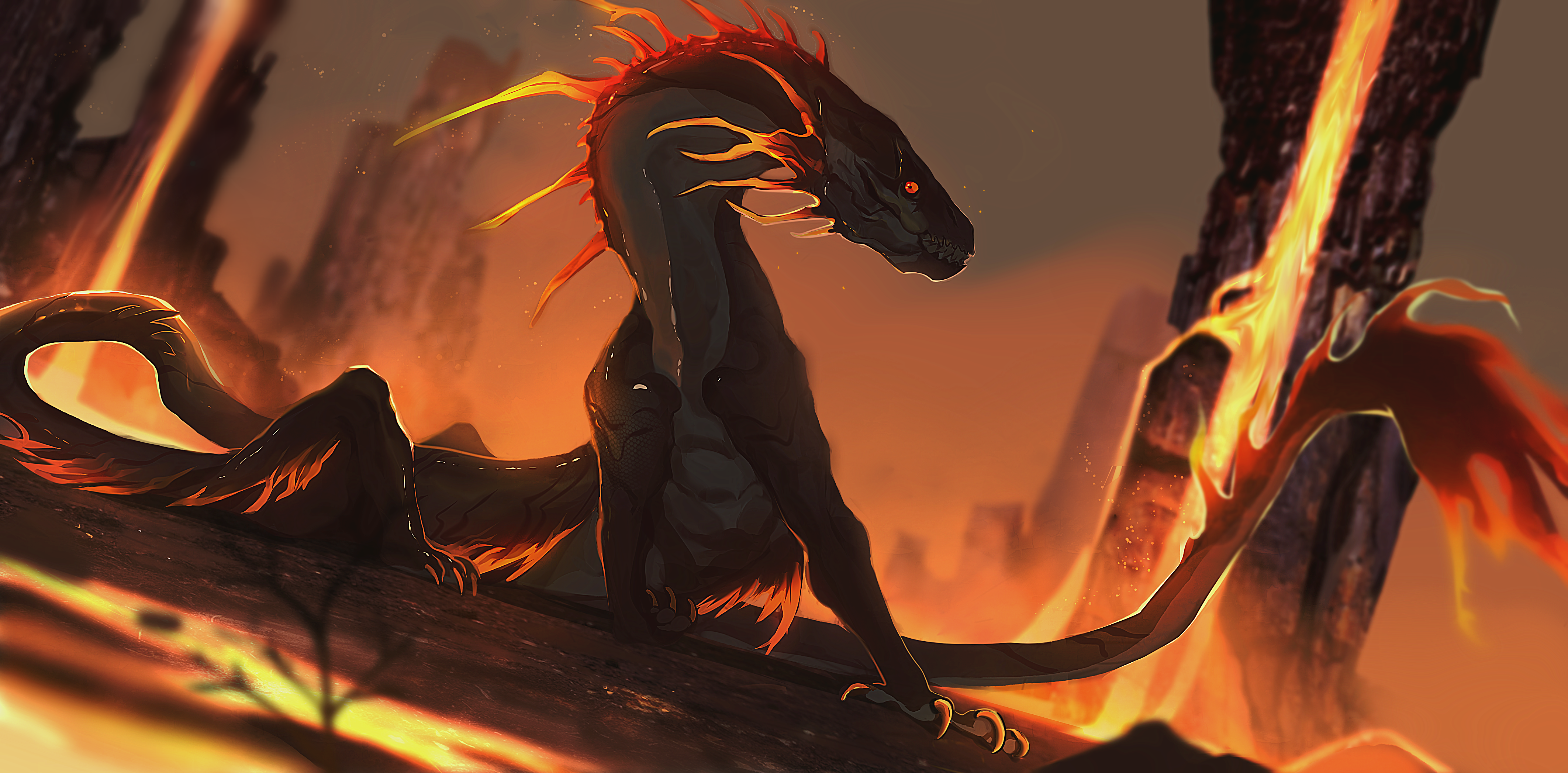
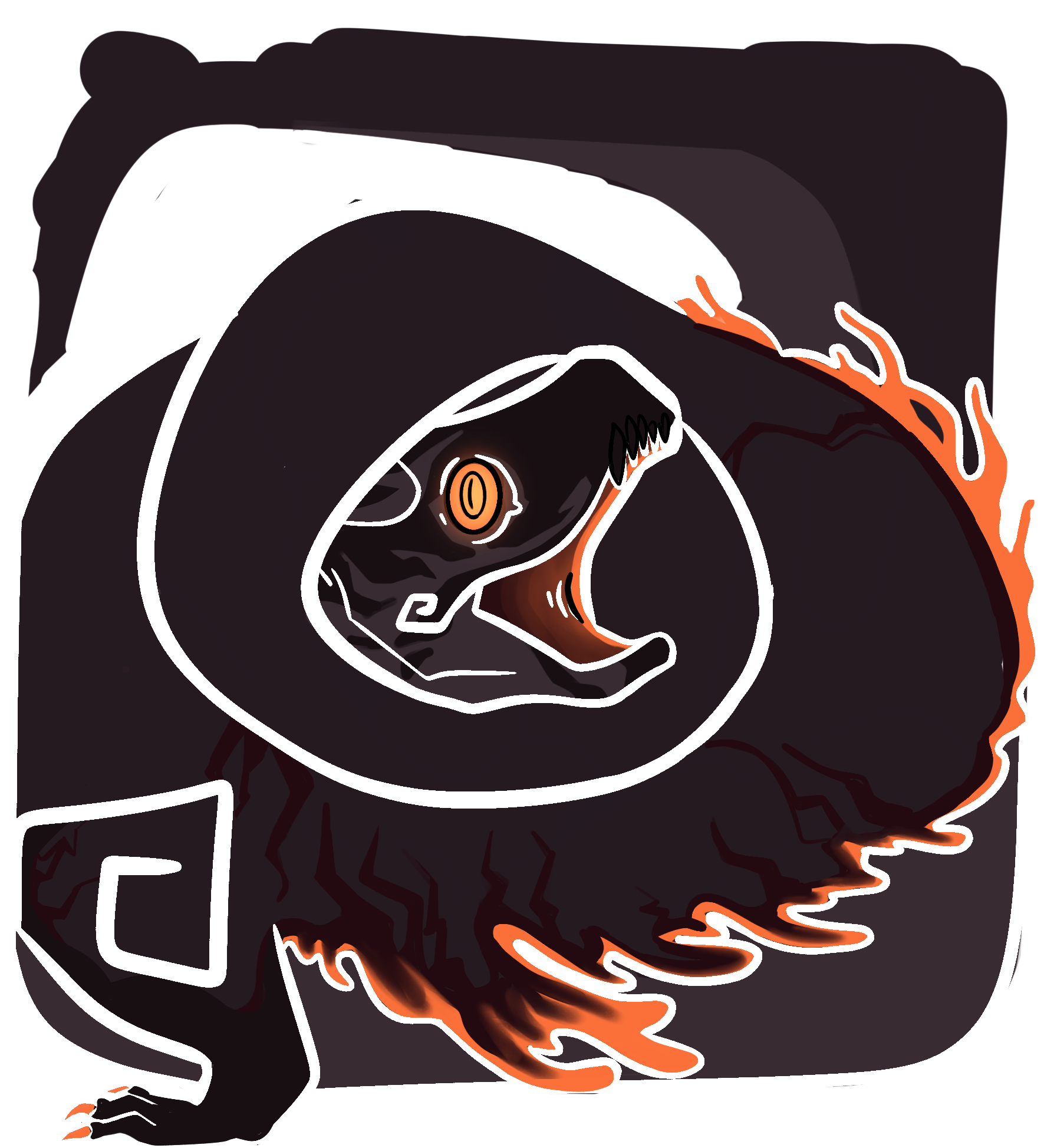
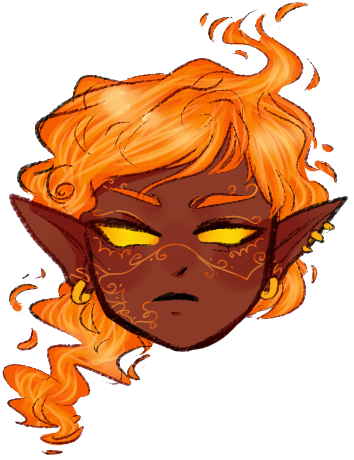

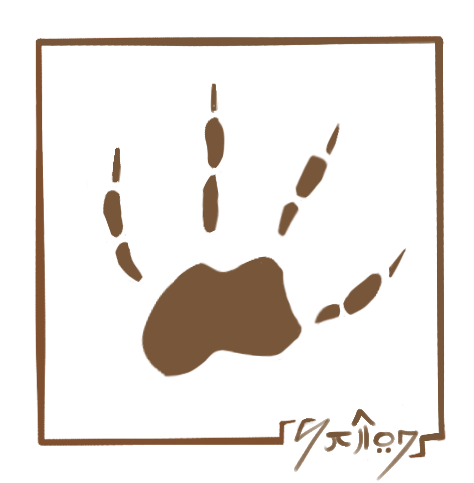
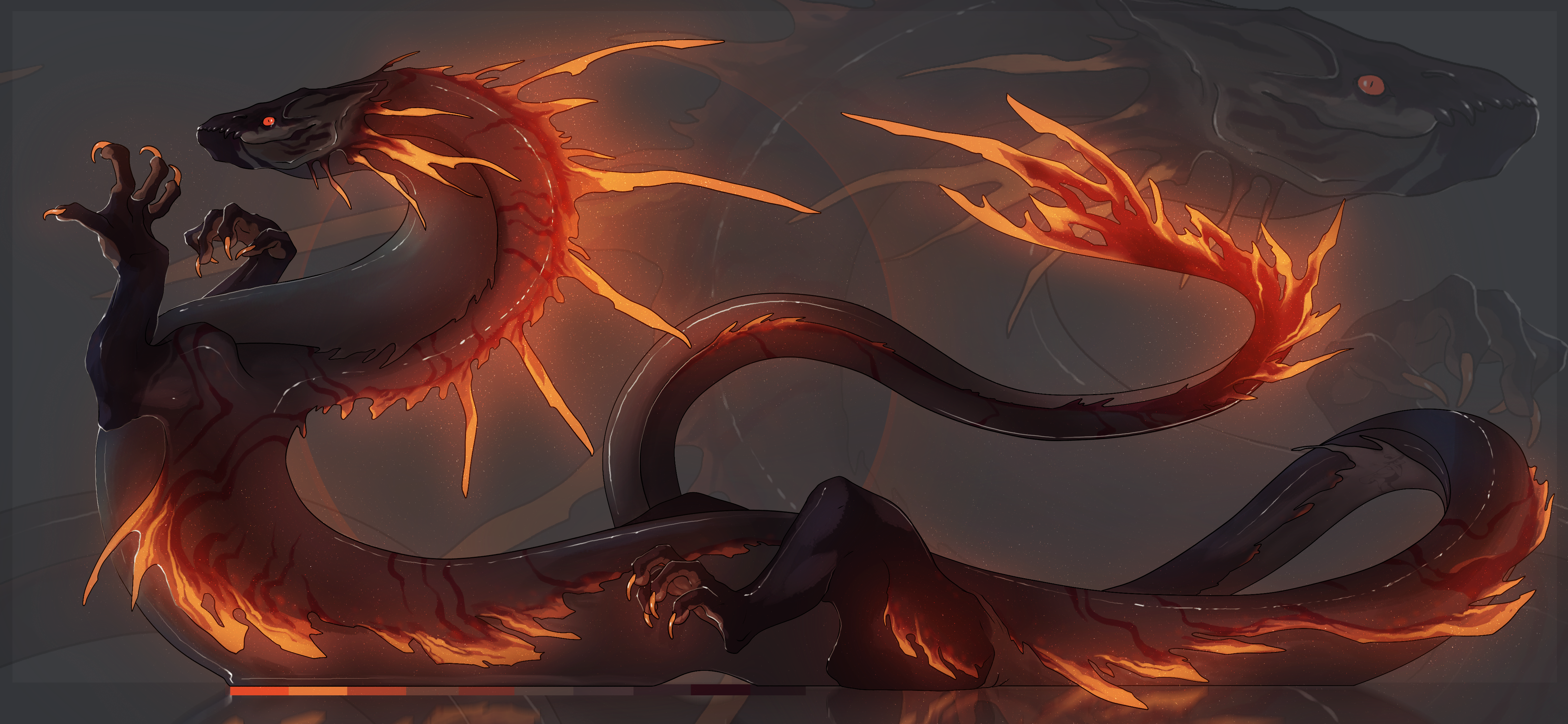


Comments